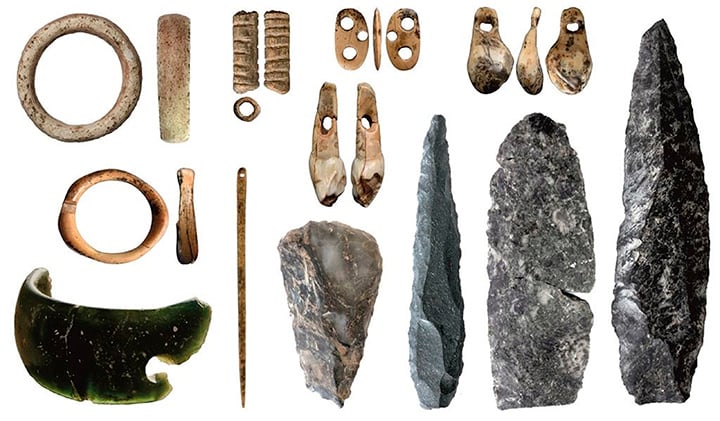
What were relationships like between homo sapiens and Neanderthals?
We know that homo sapiens and Neanderthals interbred, but their exchange of ideas and knowledge may have helped fuel a proliferation of prehistoric art, a new book contends.
“Cultural transfer—the exchange of ideas, thoughts, and language—may well also have been happening,” wrote Tom Higham, an archaeological science professor at the University of Oxford in The World Before Us: How Science is Revealing a New Story of Our Human Origins, which comes out March 25.
And it wasn’t necessarily just Neanderthals. The cousins of modern humans also included Homo floresiensis, Homo luzonesis, and the Denisovans, notes the Guardian in its review of Higham’s book.
Neanderthal cave paintings inside the Andalusian cave of Ardales, on March 1, 2018. Photo by AFP PHOTO/Jorge Guerrero via Getty Images.
It was long assumed that art and creativity evolved with homo sapiens, setting modern human species apart from other closely related—but supposedly more primitive—species. But recent findings show otherwise.
The Neanderthals made 39,000-year-old carvings, discovered in a Gibraltar cave in 2014, and 65,000-year-old cave paintings, also in Spain, discovered in 2018. (Aspects of those findings have been disputed, however.) In 2015, archaeologists found a cache of 40,000-year-old stone jewelry—including a wooly mammoth tiara and what’s believed to be the world’s oldest bracelet—in the Denisova Cave in Siberia. And, in 2019, archaeologists found ochre markings made on bone fragments on a site in China’s Henan Province, believed to have been occupied by the Denisovans between 105,000 and 125,000 years ago—which means the Denisovans might be responsible for the oldest known artworks in the world.
Artifacts found in the Denisova Cave in Siberia may have been made by the Denisovans. Photo courtesy of the Institute of Archeology and Ethnography of the Siberian Branch of the Russian Academy of Sciences.
“There were five, six, or even more different types of human present in various parts of the world,” Higham wrote.
He believes that interactions between these species could help account for “a proliferation of objects in the archaeological record” demonstrating artistic tendencies, such as the use of carving, pigment, or other decoration, including carved bones, pendant jewelry, figurines, and cave paintings.
“Through the early 50,000s, up to around 38,000 to 40,000 years ago, we see a massive growth in these types of ornaments that we simply didn’t see before,” Higham added. “Humans are good at picking up new ideas.”